The clock inside the Florence Duomo runs counterclockwise and starts its days at sunset (it is 4-6 hours fast). This is because when the clock was designed in the 1400s, sunset was the point at which the city gates were closed and all residents had to be inside the city walls.
It was the worst of times possible to visit Florence.
August 15 is the height of ferragosto, or summer holiday season in Italy. It also marks the Feast of the Assumption, and is a public holiday in most Catholic countries. The word comes from Latin for feriae Augusti (August vacations), and any proper Italian worth their salt jets to a beach (or possibly mountain) resort and spends the month surrounded by sand and surf. The cities are vacated and left for the hordes of tourists who descend upon Rome, Florence and Venice, wondering why the storefronts are dark and empty. To be fair, things are a lot better now than they were a few decades ago, when Italian news channels would televise shots of hapless tourists wandering outside closed museums, and elderly residents struggling to find an open pharmacy or bakery to buy a loaf of bread. These days, local authorities have mandated that a certain number of businesses need to stay open, so that basic needs can be supplied. Still, my 36 hours in Florence were one disappointment after another, as almost all the independent retailers not geared towards tourists displayed the ubiquitous “chiuso per ferie” (closed for holiday) sign. Did I mention that it also rained all day?
No matter, good weather is not required to partake in Florence’s greatest assets: Florentine cuisine and Renaissance art. Florence is famed for being a center of Tuscan cuisine, with a diverse range of vibrant markets, neighborhood watering holes and high-end restaurants. And with over 60% of the world’s most important artwork in Italy, over half of which is in Florence, the city probably has more Renaissance marbles per capita than any other place in the world. You pretty much can’t throw a rock without hitting something bankrolled by the Medici family.
Clockwise: a colorful selection of pasta with intriguing shapes at the Mercato Centrale; Florentine-style tripe stewed in tomato sauce with basil; fresh mushrooms at the Mercato Centrale; volcano-esque risotto with squid ink (risotto al nero di seppia)
Food things first: Tuscan cuisine is simple in design, and many of its dishes have roots as hearty peasant fare. Bistecca alla fiorentina (Florentine steak) is one hallmark dish, a hulking rare T-bone steak from Chianina cattle guaranteed to satisfy 2-3 hungry carnivores. Other specialties include ribollita or pappa al pomodoro (bread soups with vegetables), fagioli bianchi (white beans), prosciutto di cinghiale (wild boar hams), truffles (often dug up by those same wild boars), and cantucci (almond cookies similar to biscotti). Having said that, every town in Tuscany has their own specialties and variations on dishes. Another thing you may notice is that the bread is all incredibly bland because it is made without salt. This may turn off visitors, but Tuscans insist that their bread is the best one for their cuisine, since it is paired with salty cured meats, thick sauces and used in seasoned soups.
Originally, my plan was to trek to Lungarno 23 for a Chianina burger, the Nerbone food stall for a panino con lampredotto (cow intestine sandwich), ‘ino for a custom-made panini sandwich, and Banki for a bowl of Japanese ramen. Alas, all of these were closed for the holidays. On the bright side, Trattoria Nella was still keeping regular hours in August, and churning out excellent trippa alla fiorentina (Florentine-style tripe) stewed with tomato and basil. I highly recommend watching proprietor Sergio work the room as he speaks an animated mix of Italian, English, French and German.
The Mercato Centrale food market still runs every day in August (except Sundays), but with a third of the usual stalls closed, it is sort of a ghost of its usual self. If you have never seen a metropolitan Italian food market, it is definitely work checking out, but overall, I was much more impressed by the breadth and hubbub of Torino’s food market. Oh dear, am I becoming jaded?
Clockwise: detail on cantorie (choir lofts); this panel on the Gates of Paradise doors at the Baptistery tells the tale of Joshua, you can see the walls of Jericho come tumbling down at the top; a disheveled Mary Magdalene sculpture by Donatello in wood; overhead view of the atrium at the Museo dell’Opera del Duomo (Museum of Cathedral Works)
Speaking of precious stones, Florence has quite a lot of marble chunks floating about the city, and that is what draws the majority of tourists to town. Much of it was commissioned by members of the Medici dynasty, whose indelible legacies are still felt around the city. Unless you reserve a ticket ahead of time, count on waiting in line for 2-3 hours for the most popular museums (the Accademia, the Uffizi Gallery) at the height of tourist season. Pro tip: on a Sunday morning, I got to the Uffizi at 7:30 am, and there was only one other hapless guy in line who had been there since 6 am. Since the museum opens at 8:15 am, you can minimize the time you spend waiting in line by showing up at 7:45 am or so. It’s also nice to have the museum mostly to yourself as you stare at Botticelli’s Birth of Venus. Slightly less well-known but no less impressive, I highly recommend touring the Cappelle Medicee, or Medici chapel. The Chapel of the Princes is of Brobdingnagian dimensions, a mindblowingly spectacular room constructed with hunks of Roman-era marble hauled into the city by Turkish slaves.
If you are not quite so keen to stare at dead dudes with halos, and you think of Teenage Mutant Ninja Turtles when you hear ‘Michelangelo,’ the good news is that Florence is filled with free artwork and Renaissance-era buildings that can be viewed as you stroll around town. Don’t miss the sculptures and fountain in the Piazza della Signoria, Ponte Vecchio (the city’s only surviving bridge post-WW2), and of course, the formidable Florence Baptistery, Duomo and adjacent, Giotto’s Tower.

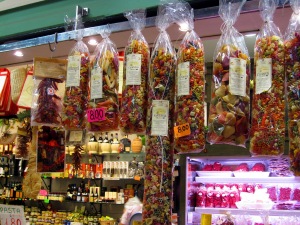

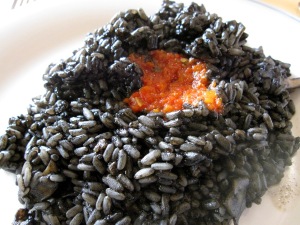
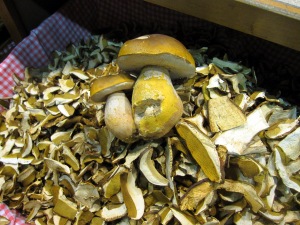
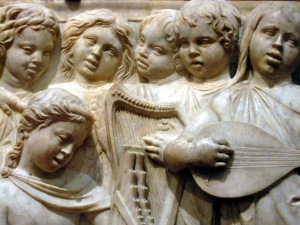

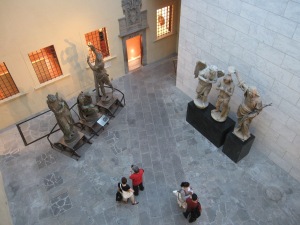

Beautiful. Thanks for sharing!
bordercrashers.com